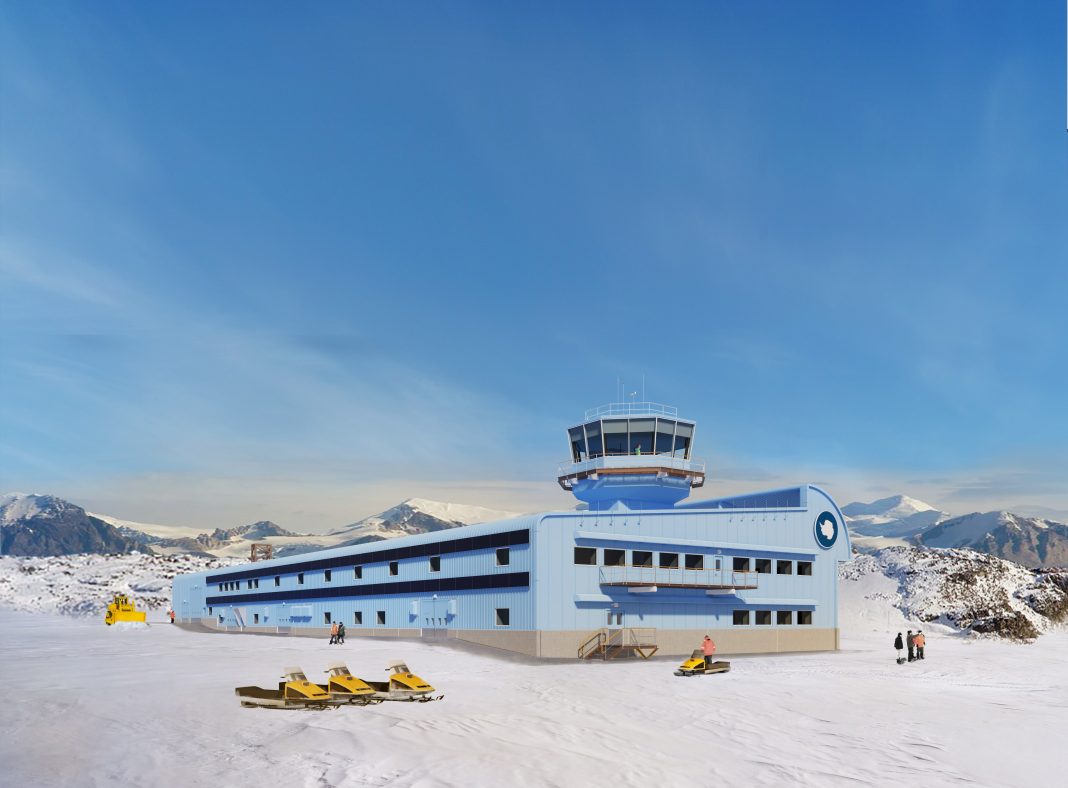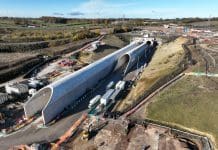Any building project can have its challenges – but the team working on the Antarctic Infrastructure Modernisation Programme, an ambitious collection of sustainable construction projects in one of the most hostile and remote environments on Earth, is taking on a unique test. Andy Krebs, digital strategy lead at Ramboll, explains how digital is helping to deliver
© The B1M: The World’s Most Extreme Construction Site
Delivery of buildings in the UK is a complex and challenging business, and we all have plenty of experience overcoming logistical and human challenges in this most benign of environments. The UK BIM Mandate was a strategic decision by the government to enable the industry to overcome some of the basic problems we face by using a structured approach to data as a lever to create a more efficient industry and, with a fair wind, enable production of better buildings.
The Antarctic Infrastructure Modernisation Programme (AIMP) plans to ambitiously upgrade British Antarctic Survey (BAS) research stations with a range of sustainable construction projects in the southern reaches of the planet. It covers a range of sites from sub-Antarctic island research stations to reducing carbon emissions at Rothera Research Station on the Antarctic Peninsula. The programme also encompasses the procurement of maritime and air assets, such as the RRS Sir David Attenborough, which is currently undergoing sea trials.
The programme started before the UK BIM Mandate in 2016 and will continue for at least another decade, bearing witness to the digital journey of the UK construction industry. BAS, a world-leading research organisation, has a natural tendency towards modernity and the journey through BIM to digital engineering parallels the wider aspirations of this progressive organisation.
At 4,500 sq m, the new scientific support facility, the Discovery Building, at Rothera Research Station is the largest building project that BAS has undertaken in Antarctica to replace a number of old and inefficient buildings. It poses exciting challenges for the delivery team, a partnership which includes Ramboll acting as BAS’s technical advisers, with its team NORR architects and Turner & Townsend, and construction partner BAM and its team, design consultants Sweco and Hugh Broughton Architects.
The project is a strategic consolidation of the Rothera Research Station bringing multiple functions under one roof for the first time, with construction expected to complete in 2023. Delivering this strategic building in such a sensitive location requires the best planning and design collaboration possible. This project was what BIM was designed to enable.
In parallel to the delivery of the Discovery Building, BAS is transitioning from its old facilities management (FM) platform to a new computer-aided facilities management (CAFM) system, IBM Maximo. This continuing process is the keystone to delivering a digitally enabled estate. Without such a system, the digital model would simply stop at the handover phase as is currently all too common.
Implementing digital efficiencies
The team sought to combine function and sustainable design in a building which would leave a minimal energy footprint. Collaboration with the construction team at the delivery end of the project and with BAS to implement BIM across the partnership has manifested the efficiencies of digitalisation and is key to the delivery of a building to BAS which truly meets its needs.
 The first step with all BIM processes is to clearly understand the client’s requirements. The BAS estates team created an Asset Information Requirement (AIR) document and collaboration with Ramboll and BAM during this process has enabled BAS to understand for themselves the format and magnitude of the data required to ensure that plant breakdowns are all but eliminated. You cannot simply phone a boiler repair company when your boiler fails in Antarctica. Furthermore, when it is minus 40 degrees outside, you do not have very long to get things moving again before what would be an irritation in the UK becomes a serious safety concern in Antarctica.
The first step with all BIM processes is to clearly understand the client’s requirements. The BAS estates team created an Asset Information Requirement (AIR) document and collaboration with Ramboll and BAM during this process has enabled BAS to understand for themselves the format and magnitude of the data required to ensure that plant breakdowns are all but eliminated. You cannot simply phone a boiler repair company when your boiler fails in Antarctica. Furthermore, when it is minus 40 degrees outside, you do not have very long to get things moving again before what would be an irritation in the UK becomes a serious safety concern in Antarctica.
Digital design and construction cannot succeed for any client without that client adapting their procurement and FM strategies to engage with the process from the start, delivering a clear information brief to the design team based on what the organisation needs to go forward and operate its new building. BAS is no different. From the outset, all the traditional challenges were faced, which always boil down to communication. At this early stage, BAM played a key role in bringing their experience to bear on the project, guiding the evolution of the AIR and other standards and enabling the client and delivery team to navigate the waters of BIM to enable the most efficient delivery possible.
It has often been said that the main beneficiaries of BIM are the constructors, but with the advent of next generation CAFM systems, this balance is changing. The experience that constructors and designers have of delivery is now key to bringing clients on this journey.
Delivering a common data standard
Key to the successful transition of design through to construction and onward to occupation is a common data standard throughout the project. As defined in the project Employer’s Information Requirements (this was pre-BSEN ISO19650) COBie was specified as the framework to allow this. However, there was one problem: no one on the team knew the mapping between COBie and Maximo. So in September 2020, hampered significantly by Covid-19 restrictions, an on-site workshop was held at BAS HQ in Cambridge to go through, line-by-line, the fields on a standard COBie spreadsheet and map them to the relevant Maximo data field. This process involved the entire delivery team coming together to share their knowledge of their part of the data journey.
This process, while still underway, is enabling BAS to fine-tune the format of the data that will be delivered to them to ensure that when it is transferred to the CAFM system, the correct data is present and it goes into the right place. More importantly, it is highlighting where information, which is not part of a standard COBie deliverable, is required by the CAFM software to give the on-site team the necessary information. Many bespoke load-sheets have been created to facilitate this.
The groundworks for the Discovery Building are now taking shape and gradually a building will appear. As a result of the learning on this project, to achieve even more on the next stage of the Antarctic Infrastructure Modernisation Programme, BAS and the technical adviser team have come together to crystallise a coherent and future-facing digital strategy for BAS, which is looking to take the learnings so far and embed it within BAS’s business-as-usual approach. With the recent reappointment of the construction team for the next stage, the Antarctic Infrastructure Modernisation Programme partners are again working together with the goal of creating a fully digitally enabled BAS estate in the most challenging of conditions.
Andy Krebs
Digital strategy lead
Ramboll
Tel: +44 20 7631 5291
Twitter: @ramboll_uk
LinkedIn: Ramboll
YouTube: Ramboll UK










![[VIDEO] Cambridge waste water plant granted permission to relocate Artist impression of the new Cambridge waste water plant and surrounding land](https://www.pbctoday.co.uk/news/wp-content/uploads/2025/04/p.151-768x364-1-218x150.jpg)



